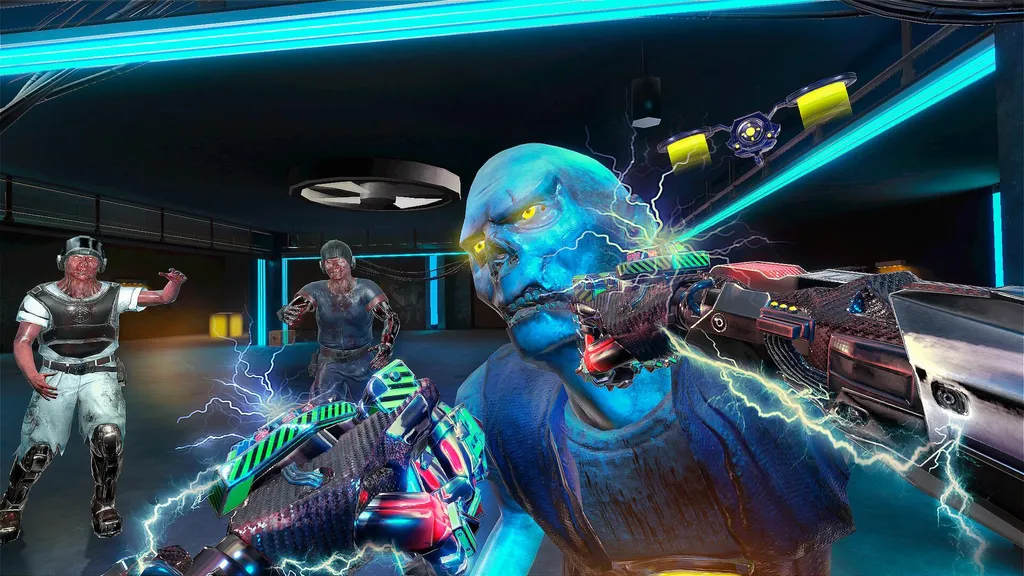Death Horizon: Cyberfusion gives you guns, swords, and implants to mow down the undead, but is this zombie shooter worth your time? Read on for our full review.
Update Notice
This review was initially published on June 9, 2024, and was based on an early access version of Death Horizon: Cyberfusion on Quest. Our final review was published on October 15 and is based on the full release.
Our reviewer has offered thoughts on full release as a continuation on the previous early access review. The new text follows from the "A Clunky Continuation" header, beneath the previous conclusion.
I'm usually lenient when it comes to early access games. These are works in progress, and even if I know there's room for improvement, I might still like the core gameplay or foundations. Then, there's Death Horizon: Cyberfusion. After playing this arcadey roguelike romp against the undead for roughly six hours, I can only say that I'm glad that I could at least launch the game.
Cyberfusion follows on the heels of its predecessor, Death Horizon: Reloaded. Admittedly, I didn't play the previous game. My closest frames of reference for the VR zombie apocalypse genre are Arizona Sunshine 2, Resident Evil 4 Remake VR, and The Walking Dead: Saints & Sinners. I don't expect an early access game like Cyberfusion to have a slew of features, but I still expected more than what's currently available.
For starters, Death Horizon: Cyberfusion doesn't have a traditional campaign. Instead, progression is broken up into derivative and uninspired mini-tallies, such as "kill X number of zombies," "get X number of headshots/decapitations," "survive for X minutes," and so on.
As you complete these tallies, you unlock additional maps, which consist of drab-looking corridors and samey-looking hallways. The level design doesn't inspire confidence, even with procedural generation, as you notice that there are only minor changes like the objects in a corridor or the placements of terminals that grant extra health, ammo, or credits.
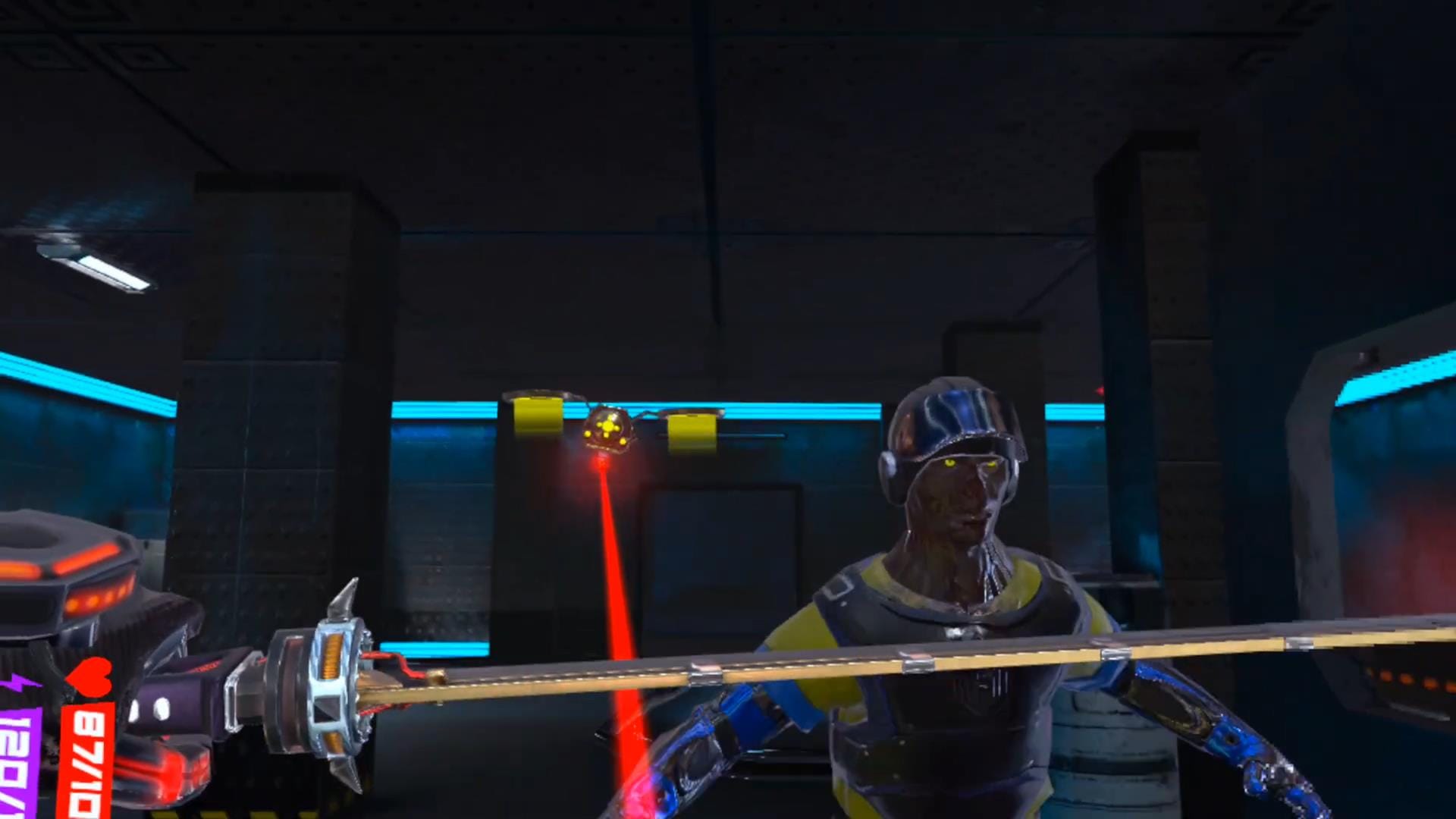
Enemy variety and design are also sorely lacking. Some zombies shamble toward you, those that move a bit faster, and beefier brutes that wear football jerseys. Drones may appear, but they're quickly dealt with if you can deflect their laser projectile. Outside of the boss-type foe in later levels/maps – which requires more effort as it charges and chases after you – the remaining hostiles barely pose a challenge. However, if you're not careful and your character dies, you lose all "unbanked" credits and the purchased firearms you carry. You have to amass credits once more with only a melee weapon/prosthetics to see you through, hence the roguelike nature.
Death Horizon: Cyberfusion tries to delve deeper into futuristic sci-fi and cyberpunk themes by giving your character modifications and implants. Sadly, the early access version only lets you switch between two prosthetic arms in the Horizon Labs hub: one enables you to deal a powerful electrocuting blow, and another gives you Wolverine/Baraka-esque blades that protrude from your knuckles. These are decent combat features, though I have to replenish energy by slaying more opponents.
Firearms, meanwhile, are purchased using the credits earned from terminals or zombie kills. Regrettably, the selection pool is limited. Currently, I can only purchase a pistol and an assault rifle; the shotgun and revolver are currently unavailable at the time of writing. Still, I did have a trusty katana, which is always part of the default loadout.
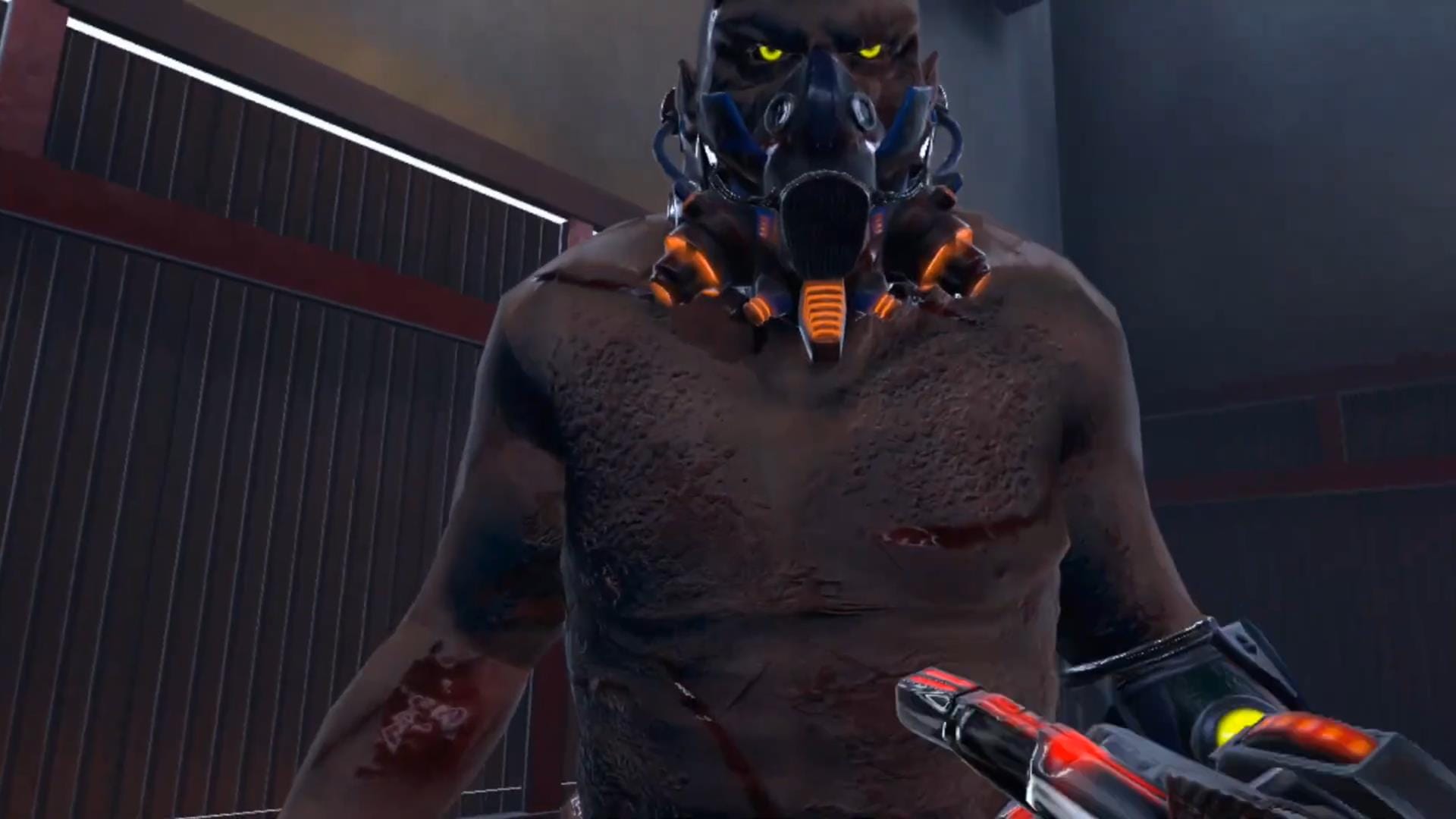
Given the above, you might be wondering: "Hey, you get a sword, empowered melee attacks, and a couple of guns. These aren't much, but combat should still be exciting and dynamic, right? Right?"
Sadly, no. Death Horizon: Cyberfusion offers less of a fast and frantic VR workout experience. Instead, it's more akin to a stroll in the park – except I had my hand held out as though I was walking a dog or leading a marching band.
That's due to the aforementioned katana. I had to hold it horizontally, ensuring the weapon was roughly head or neck level. Then I slowly moved toward the undead, or I'd let them approach me. The result is near-instant decapitations, all without doing slicing or stabbing motions.
Additionally, deflecting drone lasers is done by holding the katana outward, so I barely had to move my arms during most runs. I was as deadly as Michonne from The Walking Dead, albeit a Michonne on an escalator, aware that her flight's been delayed and she doesn't need to rush to the adjacent terminal.
Worse, enemies seemed to only spawn in corridors or rooms that I was not looking at. I've never noticed zombies emerging from darkened crawlspaces or ventilation ducts, but they did magically appear several feet behind me if I so much as turned around. That led to runs where I simply stayed near the entrance/exfiltration point, held out my katana, and funneled shambling corpses into my "Limbo Blade" party, amassing credits and XP. The experience was tedious, to say the least.
Comfort
Death Horizon: Cyberfusion can be played while sitting down or standing up. There are options for snap turning at 15, 30, 45, and 90 degrees, as well as smooth turning, though there’s no tunneling or vignetting feature. Likewise, there are height offsets that can be tweaked via a panel at the entrance of the hub.
In the weapons room, it’s possible to change the positioning and scale of your inventory slots, such as the holsters for your main weapon, ammo, sidearm, and katana. These make it easier to grab hold of and bring out the armaments located at your hips, chest, and waist. There’s also a magnetic pull mechanic so you can quickly reel in objects, as well as an item respawn feature in case you accidentally drop your weapons.
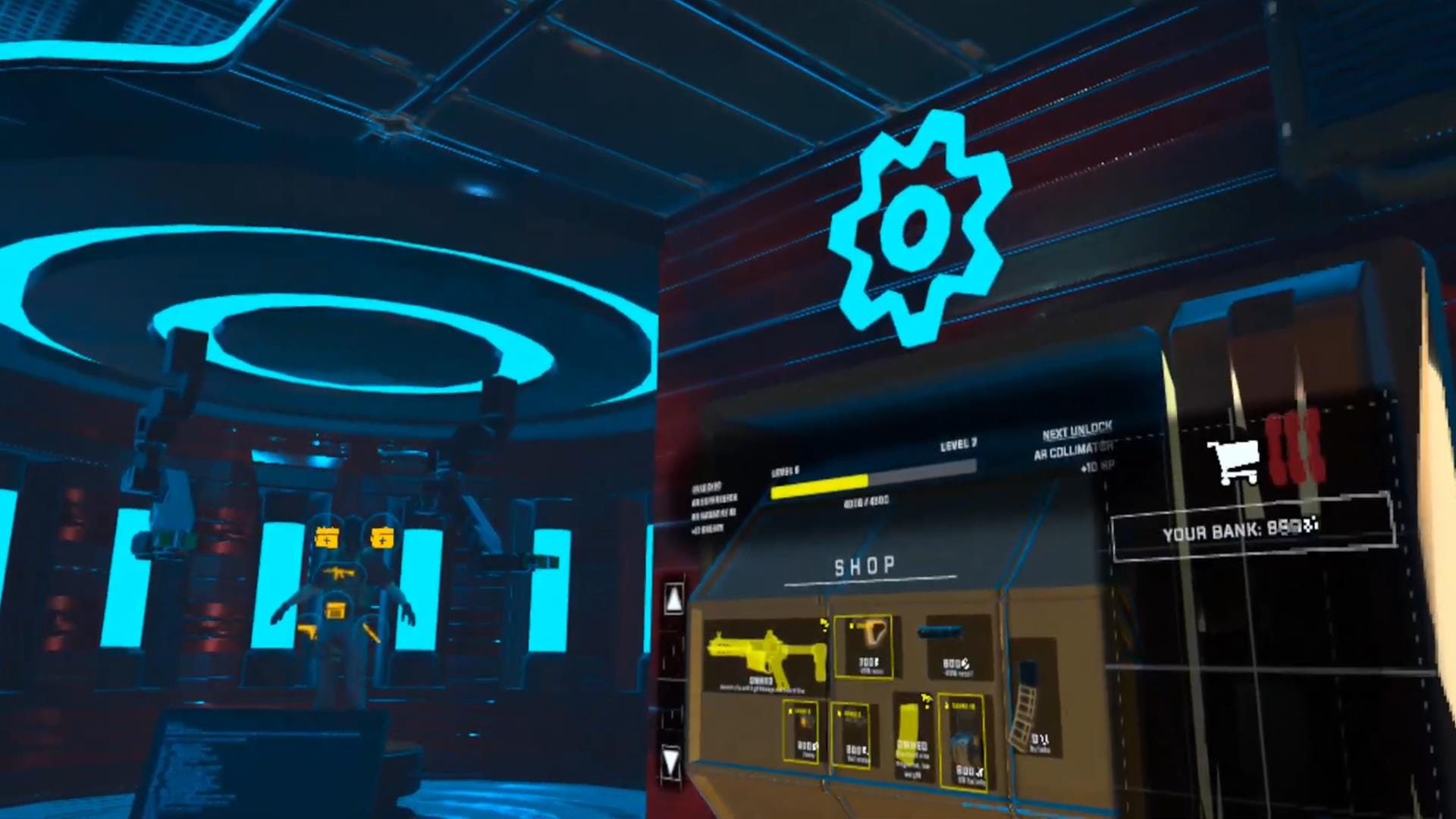
The powered prosthetics and firearms feel unnecessary. Although I appreciate the inclusion of manual reload controls, there was really no point in carefully aiming, shooting, grabbing a magazine from waist level, and reloading my weapon – the sword did the trick smoothly and effortlessly. The same can be said for limited physics mechanics, such as pulling boxes and maimed torsos and throwing them at your opponents, though these actions made me laugh a few times. Furthermore, due to roguelike mechanics, weird random spawns, and not wanting to lose credits, I had to choose the most reliable survival method.
A Clunky Continuation
Four months after I initially checked out Death Horizon: Cyberfusion, the studio informed UploadVR that the full version of the game is now available. I've gone back in, eager to see if there's any new improvements. Sadly, even the full release leaves me feeling disappointed.
I immediately noticed that my early access progress is gone, forcing me to say goodbye to my level 5 map and shotgun unlocks as I clicked on the New Game option and went through the tutorial again. Two new weapons were added as part of the latest update: the Burst Rifle and Revolver. Curiously enough, the only cybernetic implant available is the Gorilla Power, which is the same old electrocuting punch from before.
Other options, such as the Razor Edge, Grappling Hook, and Spider Hand, simply had "Coming Soon" written on their panels. Also, a separate room in the hub is supposed to act as a bar, but this, too, had “Coming Soon” written all over it. I began to wonder why this version is being considered the full release, even though certain features were still missing. There's no early access tag on Quest anymore but it's still listed as such on Steam.
Nevertheless, I went straight ahead to play the missions. The biggest change is that progression is no longer tied to kill tallies. Instead, I had to complete collection and delivery-based objectives. For instance, the first and third levels involve acquiring three canisters with a purple glow. The second and fourth levels, meanwhile, require bringing a glowing canister to a machine. In the early access version, the tallies meant that I could just stay close to the elevator while racking up kills. In the full release version, you really need to explore the facility.
The maps themselves are sprawling and expansive, and procedural generation means quest items and terminals might appear in different locations. Additionally, I can bring out my cybernetic arm at eye level to see the rooms that I’ve been to. Unfortunately, level design is rudimentary at best; they’re the same drab-looking corridors and samey-looking hallways that I mentioned months ago. And, yes, the enemy spawn mechanic, where hostiles spawned in hallways and corridors that I wasn’t directly looking at, remains common. That leaves the gameplay feeling boring and unengaging.
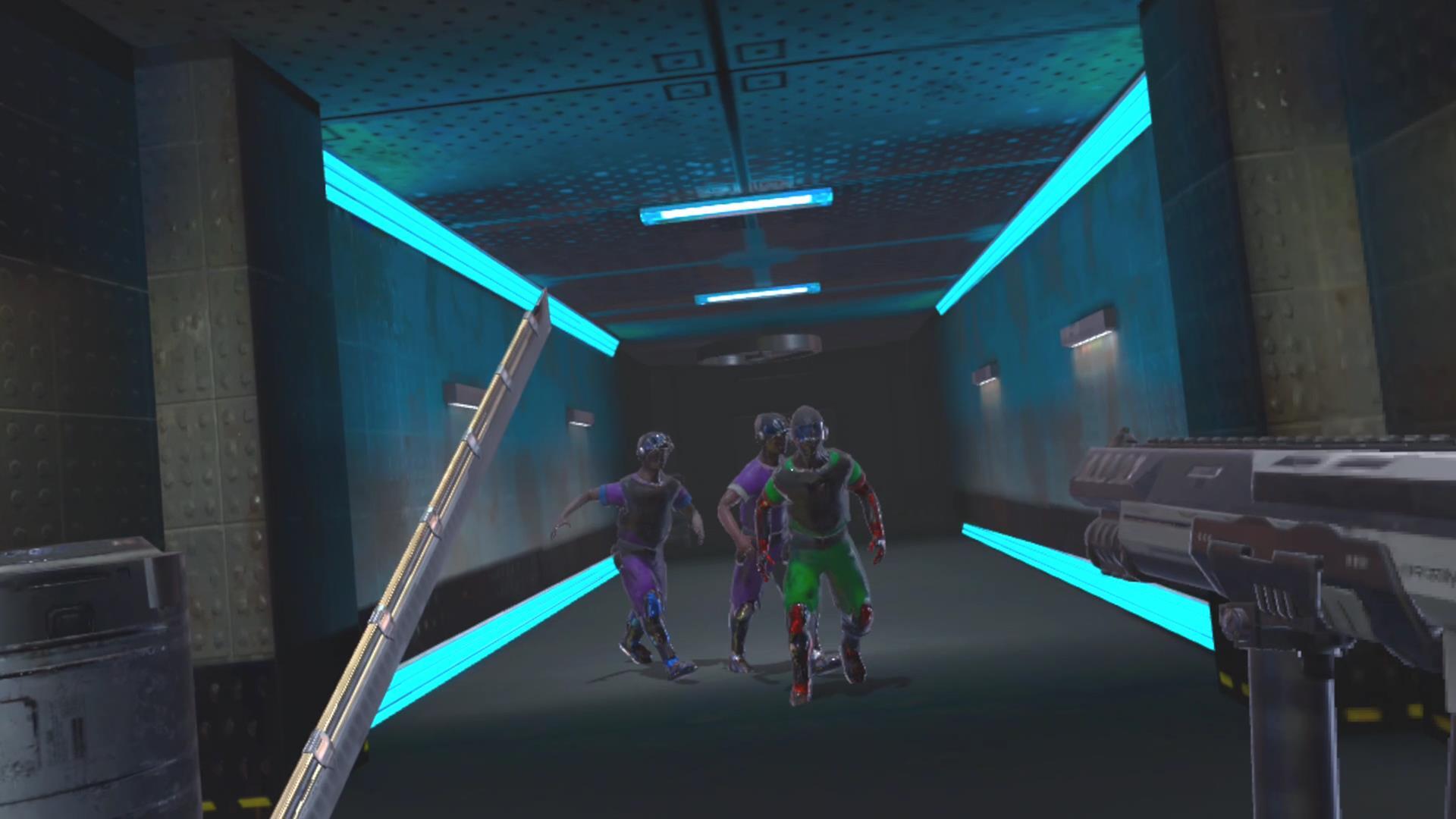
One factor from Death Horizon: Cyberfusion’s early access period that made it too easy was the katana. Specifically, I could hold out my katana and walk through zombies to decapitate them. That no longer works in the full version – I now have to put in the effort when chopping down my foes. Although there’s an added degree of difficulty–at least when compared to the “Michonne on a walkalator” gameplay from before–the action is unfortunately sloppy at best. The katana tends to get stuck in craniums and bodies more often now if I do slicing or piercing motions; zombies tend to flop around uncontrollably, too, leading to annoying sequences whenever I am surrounded by enemies.
I mostly rely on an overhead chop with both the katana and Gorilla Power, which seemed to do the trick. Firearms, meanwhile, aren’t as viable as the melee options. Think of how shotguns in first-person tactical or zombie apocalypse shooters tend to blow apart a target at close range. In Death Horizon: Cyberfusion, a point-blank shotgun blast sometimes isn't enough to take out a measly zombie. The visual and physics effects are also lacking, leading to dull and uninspired action.
Death Horizon: Cyberfusion Review - The Final Verdict
Even though we’ve been told that this is the full release, Death Horizon: Cyberfusion still feels incomplete. Some mechanics and features, such as several cybernetic implants, are missing. There are some collectibles to find but these only offer lore snippets, which aren't a priority compared to, say, upgradable implants or new character skills. Similarly, the gameplay and level design remain uninspired.
In the end, this physics-based first-person action game that’s supposed to have a futuristic flair still has a long road ahead. It certainly doesn’t hold a candle to other VR horror titles, zombie apocalypse survival games, or tactical shooters.

UploadVR uses a 5-Star rating system for our game reviews – you can read a breakdown of each star rating in our review guidelines.

